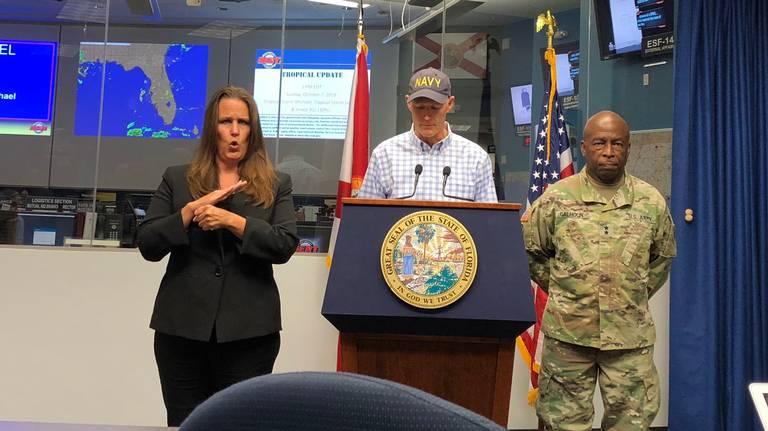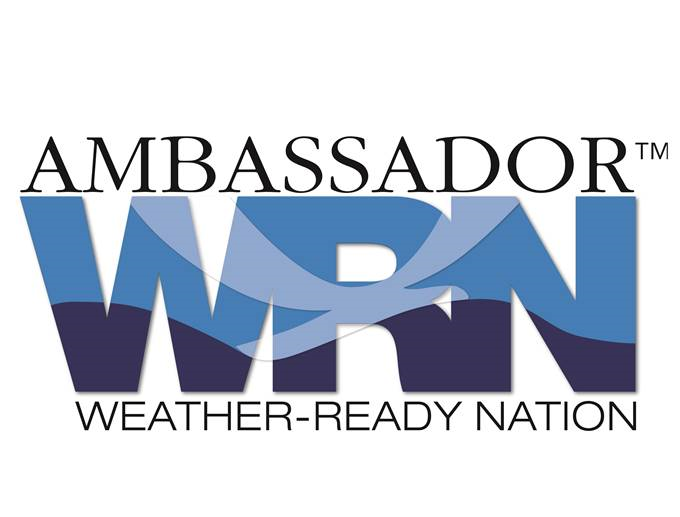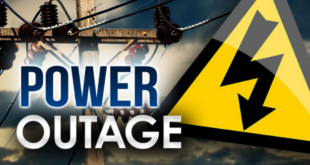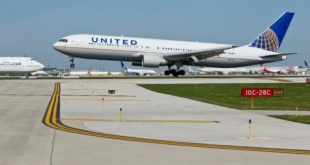Monday morning brings to us a number of hurricanes and tropical a storm barreling down on various locales. They are Hurricane Michael (Gulf of Mexico), Hurricane Sergio (Pacific Ocean), and Tropical Storm Luban (Arabian Sea/Indian Ocean).
Hurricane Michael

Michael was a strong storm in the Caribbean which is gaining strength rapidly as it transits across the warm Gulf of Mexico waters.
National Hurricane Center has localized information available at these links: Tallahassee FL, Tampa FL, Mobile AL/Pensacola FL
UPDATE: 1630EDT 08 OCT 2018
#HurricaneMichael is currently projected to make landfall as a 115 mph Category 3 hurricane with potential life-threatening storm surge. Rapid intensification is possible over the next 36 hours right up until landfall. Heed all orders from your local emergency officials. #alert
— Florida SERT (@FLSERT) October 8, 2018
Florida’s Governor has declared a state of emergency for northwest Florida and all of the weather models have the hurricane strength growing with the northern gulf coast of Florida about to experience a direct hit from a storm. We have extracted the contents:
FLORIDA STATE PREPAREDNESS ACTIONS
MILITARY SUPPORT
- At the direction of Governor Scott, 500 National Guard Troops have been activated to assist with planning, logistics and to prepare for response in impacted areas.
- The Florida National Guard has 5,500 guard members available for deployment if needed.
LAW ENFORCEMENT
- The Florida Highway Patrol is actively monitoring the storm and ready to assist with any weather-related missions.
- The Florida Highway Patrol is making preparations for 342 state troopers to activate to 12-hour shifts. The activation would provide 24-hour enhanced coverage across Florida’s Big Bend and Panhandle.
- The Florida Highway Patrol is preparing two Quick Response Force teams comprised of 66 state troopers to deploy with minimal notice to any area of the state of Florida that may need assistance.
- DHSMV’s Florida Licensing on Wheels (FLOW) mobiles are on standby to respond to impacted areas as soon as the storm passes.
- The Florida Fish and Wildlife Conservation Commission (FWC) is actively monitoring Tropical Storm Michael and ready to respond. On standby are 40 officers from outside the projected path ready to deploy if needed. They will respond with a variety of specialized equipment, including shallow draft boats, ATVs, airboats and four wheel drive vehicles.
- The Florida Department of Law Enforcement’s (FDLE) Mutual Aid team is communicating with law enforcement partners and participating in regular conference calls with the State Emergency Operations Center.
- FDLE has communicated with members and partners in the panhandle to make preparations and be ready to begin response operations tomorrow morning.
TRANSPORTATION & PUBLIC WORKS
- The Florida Department of Transportation (FDOT) is actively monitoring Tropical Storm Michael. FDOT is preparing crews in anticipation of potential landfall in the Panhandle.
PUBLIC HEALTH AND MEDICAL
- The Agency for Health Care Administration (AHCA) is in contact with healthcare facilities to ensure they have the resources they need.
- AHCA is in the process of activating the Emergency Status System (ESS) for health care facilities in the panhandle to enter their storm preparedness status including generators and utility company information, emergency contacts, and bed availability.
- The Florida Department of Health is actively monitoring the tropical storm and is in close communication with the Division of Emergency Management’s State Emergency Response Team. A statewide call was conducted on Sunday October 7 to discuss weather conditions and current needs.
- County health departments will coordinate with their local County Emergency Management to ensure preparations are in place for Special Needs Shelters. Call downs will be conducted to persons on Special Needs Registries to ensure plans are in place for potential evacuations.
- County health departments will review their local continuity of operations plans to ensure public health activities and CHD services are not interrupted by the storm.
- County health departments will conduct outreach to healthcare facilities within the county to ensure they are implementing facility level emergency plans.
- With the Governor’s declaration of an emergency, the Department of Elder Affairs will activate the emergency relief measures for the respective Area Agencies on Aging, lead agencies, and local service providers in the projected path of the storm.
- The Area Agencies on Aging will then contact and coordinate levels of activation with their respective county offices of emergency management and begin calls to all local service providers to ensure that the needs of all elders will be addressed before, during, and after the event.
- The Florida Department of Veterans’ Affairs (FDVA) operates six skilled nursing facilities and one assisted living facility. All state veterans’ homes are currently operational.
ENVIRONMENTAL PROTECTION
- All Florida State Parks remain open at this time. Parks staff continues to monitor the forecast and will coordinate with state and local emergency managers regarding closure decisions.
- The current condition of the state’s beaches has been assessed, which will expedite post-storm assessments.
BUSINESS AND INDUSTRY
- The Florida Department of Economic Opportunity (DEO) is encouraging businesses to visit FloridaDisaster.biz and register to receive updates as the storm progresses.
CONTACTS
- The State Assistance Information Line (SAIL) contact number is 1-800-342-3557.
- The State Emergency Operations Center Media Line: 850-921-0217.
- Follow @FLSert or @FLGovScott on Twitter for live updates on Tropical Storm Michael.
- Visit http://www.floridadisaster.org/info to find information on shelters, road closures, and evacuation routes.
Resources: Florida’s emergency management and preparedness can be found here: https://www.floridadisaster.org
Hurricane Sergio
Hurricane Sergio is in the Eastern Pacific and is heading toward the Baja California Peninsula. It is expected to affect some of the same locales as Hurricane Rosa did just a few weeks ago. Landfall is expected to occur Friday in the early morning.

Tropical Storm Luban
Tropical Storm Luban has been moving across the Indian Ocean and is now in the Arabian Sea. It is expected to make landfall across the shoreline of Oman and Yemen.
The northern Somalia near the Cape of Guardafui Ras BInnah can expect to feel the effects of the storm as it increases to Hurricane force winds prior to landfall.

We are pleased to advise, that Securely Travel has been designated a NOAA Weather-Ready Nation Ambassador™ by the National Oceanographic and Atmospheric Administration.
Storm preparedness advice from FEMA!
FEMA Hurricane Preparedness Video:
Ready.gov Hurricane Preparedness tips
IF YOU ARE UNDER A HURRICANE WARNING, FIND SAFE SHELTER RIGHT AWAY
- Determine how best to protect yourself from high winds and flooding.
- Evacuate if told to do so.
- Take refuge in a designated storm shelter, or an interior room for high winds.
- Listen for emergency information and alerts.
- Only use generators outdoors and away from windows.
- Turn Around, Don’t Drown! Do not walk, swim, or drive through flood waters.
Prepare NOW
- Know your area’s risk of hurricanes.
- Sign up for your community’s warning system. The Emergency Alert System (EAS) and National Oceanic and Atmospheric Administration (NOAA) Weather Radio also provide emergency alerts.
- If you are at risk for flash flooding, watch for warning signs such as heavy rain.
- Practice going to a safe shelter for high winds, such as a FEMA safe room or ICC 500 storm shelter. The next best protection is a small, interior, windowless room in a sturdy building on the lowest level that is not subject to flooding.
- Based on your location and community plans, make your own plans for evacuation or sheltering in place.
- Become familiar with your evacuation zone, the evacuation route, and shelter locations.
- Gather needed supplies for at least three days. Keep in mind each person’s specific needs, including medication. Don’t forget the needs of pets.
- Keep important documents in a safe place or create password-protected digital copies.
- Protect your property. Declutter drains and gutters. Install check valves in plumbing to prevent backups. Consider hurricane shutters. Review insurance policies.
When a hurricane is 36 hours from arriving
- Turn on your TV or radio in order to get the latest weather updates and emergency instructions.
- Restock your emergency preparedness kit. Include food and water sufficient for at least three days, medications, a flashlight, batteries, cash, and first aid supplies.
- Plan how to communicate with family members if you lose power. For example, you can call, text, email or use social media. Remember that during disasters, sending text messages is usually reliable and faster than making phone calls because phone lines are often overloaded.
- Review your evacuation zone, evacuation route and shelter locations. Plan with your family. You may have to leave quickly so plan ahead.
- Keep your car in good working condition, and keep the gas tank full; stock your vehicle with emergency supplies and a change of clothes.
When a hurricane is 18-36 hours from arriving
- Bookmark your city or county website for quick access to storm updates and emergency instructions.
- Bring loose, lightweight objects inside that could become projectiles in high winds (e.g., patio furniture, garbage cans); anchor objects that would be unsafe to bring inside (e.g., propane tanks); and trim or remove trees close enough to fall on the building.
- Cover all of your home’s windows. Permanent storm shutters offer the best protection for windows. A second option is to board up windows with 5/8” exterior grade or marine plywood, cut to fit and ready to install.
When a hurricane is 6-18 hours from arriving
- Turn on your TV/radio, or check your city/county website every 30 minutes in order to get the latest weather updates and emergency instructions.
- Charge your cell phone now so you will have a full battery in case you lose power.
When a hurricane is 6 hours from arriving
- If you’re not in an area that is recommended for evacuation, plan to stay at home or where you are and let friends and family know where you are.
- Close storm shutters, and stay away from windows. Flying glass from broken windows could injure you.
- Turn your refrigerator or freezer to the coldest setting and open only when necessary. If you lose power, food will last longer. Keep a thermometer in the refrigerator to be able to check the food temperature when the power is restored.
- Turn on your TV/radio, or check your city/county website every 30 minutes in order to get the latest weather updates and emergency instructions.
Survive DURING
- If told to evacuate, do so immediately. Do not drive around barricades.
- If sheltering during high winds, go to a FEMA safe room, ICC 500 storm shelter, or a small, interior, windowless room or hallway on the lowest floor that is not subject to flooding.
- If trapped in a building by flooding, go to the highest level of the building. Do not climb into a closed attic. You may become trapped by rising flood water.
- Listen for current emergency information and instructions.
- Use a generator or other gasoline-powered machinery outdoors ONLY and away from windows.
- Do not walk, swim, or drive through flood waters. Turn Around. Don’t Drown! Just six inches of fast-moving water can knock you down, and one foot of moving water can sweep your vehicle away.
- Stay off of bridges over fast-moving water.
Be Safe AFTER
- Listen to authorities for information and special instructions.
- Be careful during clean-up. Wear protective clothing and work with someone else.
- Do not touch electrical equipment if it is wet or if you are standing in water. If it is safe to do so, turn off electricity at the main breaker or fuse box to prevent electric shock.
- Avoid wading in flood water, which can contain dangerous debris. Underground or downed power lines can also electrically charge the water.
- Save phone calls for emergencies. Phone systems are often down or busy after a disaster. Use text messages or social media to communicate with family and friends.
- Document any property damage with photographs. Contact your insurance company for assistance.
 Travel Securely Securely Travel
Travel Securely Securely Travel



